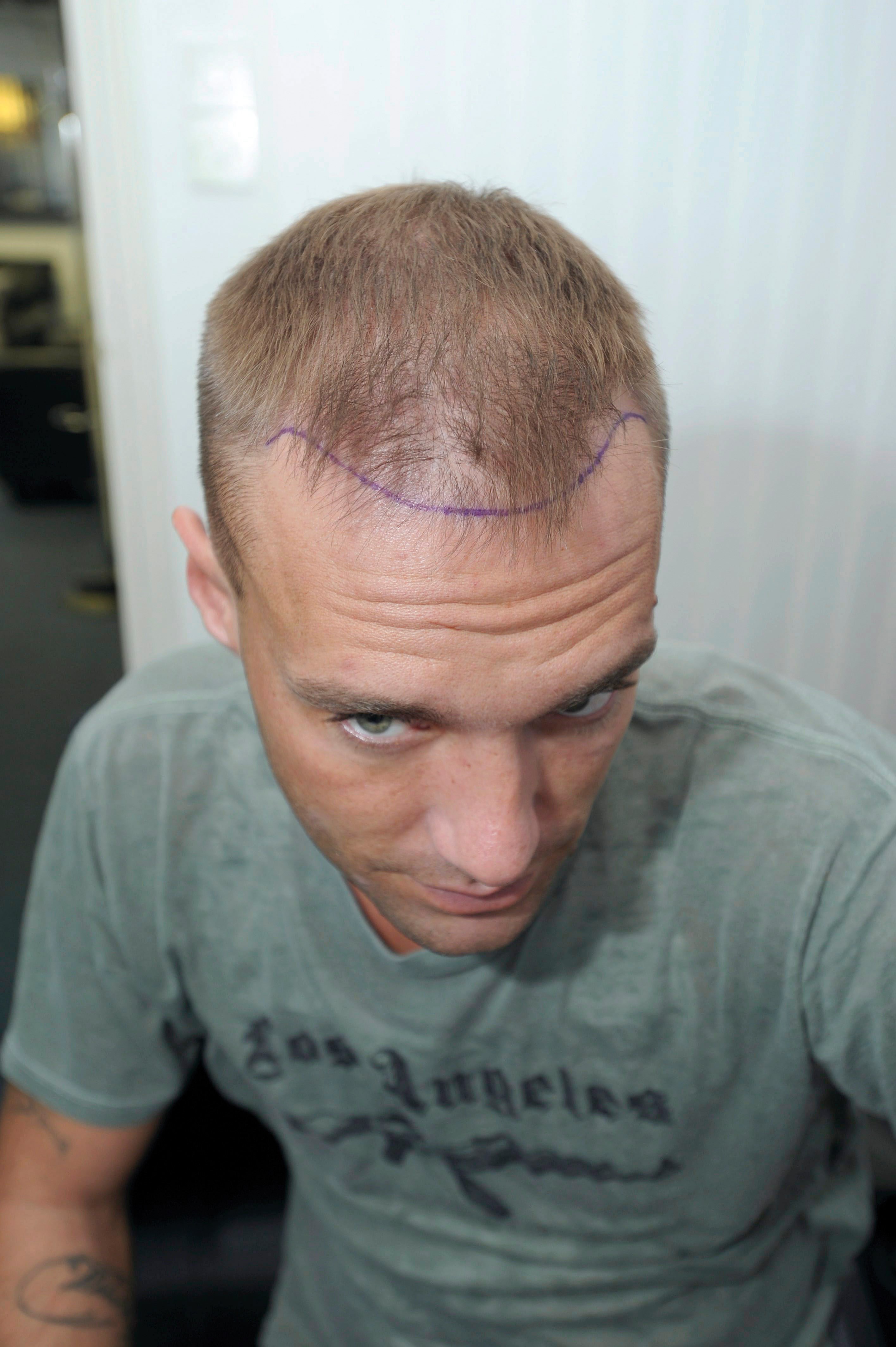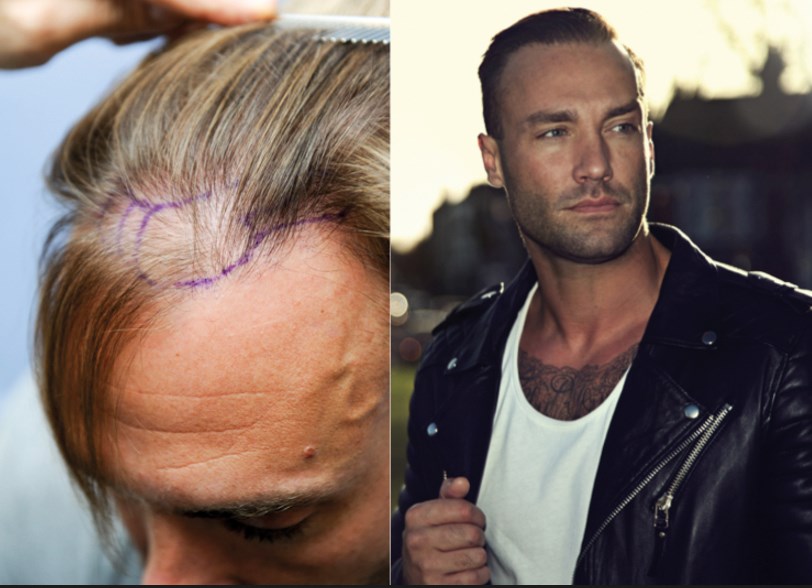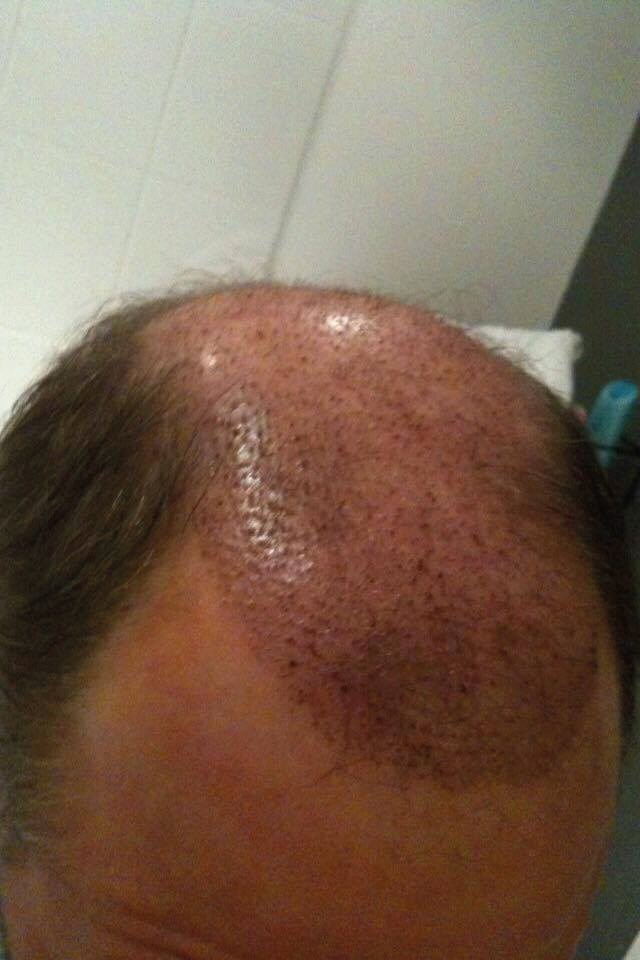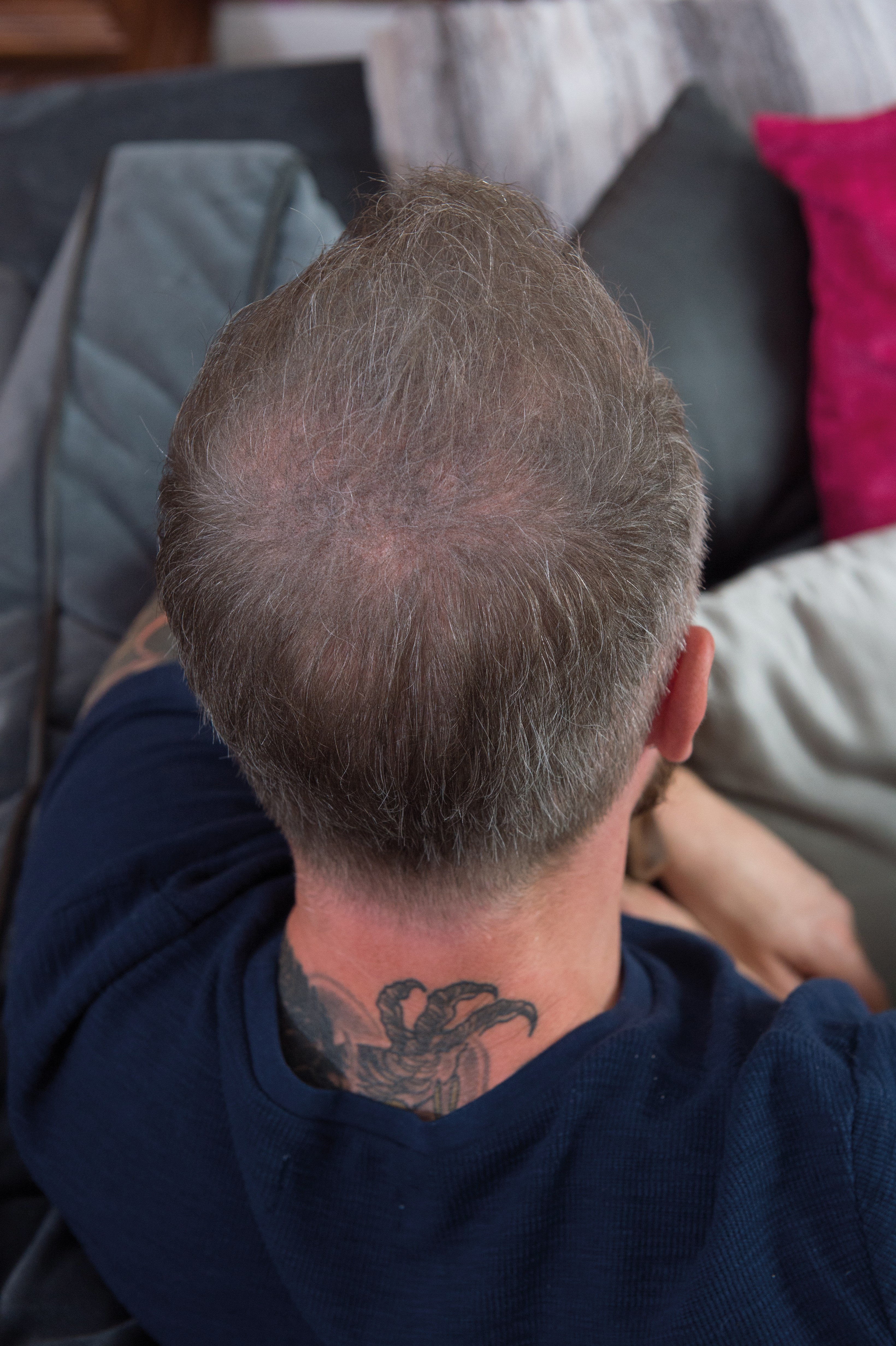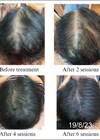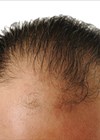A leading hair transplant surgeon provides an overview of the most effective surgical treatments for hair restoration – and how the industry will develop over the next decade.
Modern hair transplant techniques were first developed in Japan in the 1930s [1], where surgeons used grafts to help restore eyebrow and eyelashes as well as the scalp hair of burns victims. It did not develop as a treatment for male pattern baldness until the 1950s when dermatologist Dr Norman Orentreich planted the first grafts in balding areas [2].
Techniques progressed from there and follicular unit transplantation (FUT) [3], also known as strip harvesting, became the first popular method of hair transplantation.
FUT is where a strip of hair is surgically removed from the back or side of the scalp and follicular unit grafts (one to four hairs) are extracted and replanted in the balding area by the surgeon, using very small micro blades or fine needles. The main drawback with this method is that a scar is left in the donor area, which is visible if the patient likes to wear his or her hair short.
Early FUT procedures in the 1980s had mixed success [4]. Patients could be left with plug-like doll’s hair, with several hairs sprouting together in unsightly individual clumps. However, techniques for replanting donor hair have improved, creating a much more natural blend with existing natural hair. Techniques for planting new hair evolved over time as surgeons became more experienced at performing the operation and shared knowledge at big conferences such as the International Society of Hair Restoration Surgery (ISHRS) Live Surgical Workshop in Orlando, Florida [5].
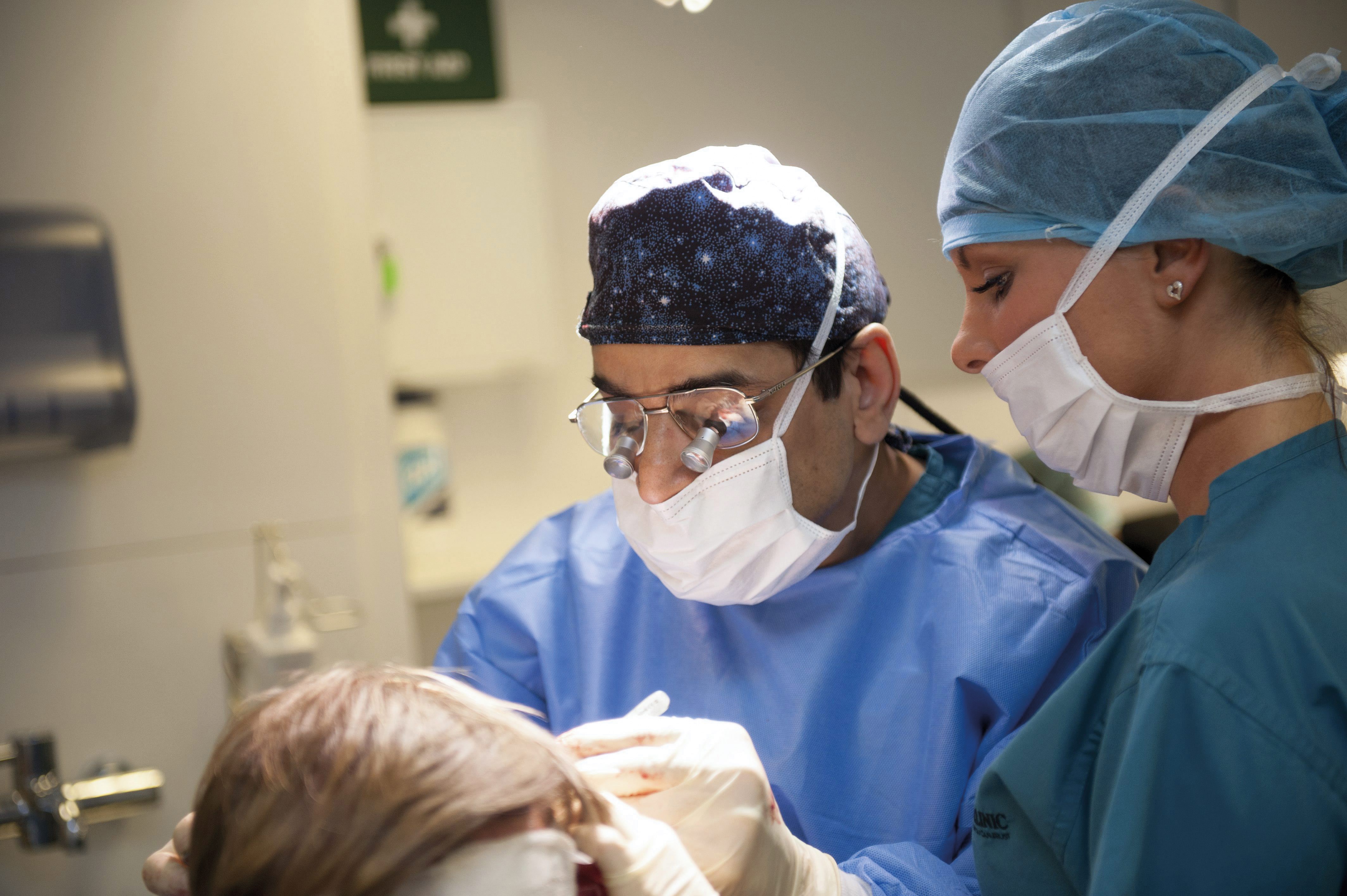
Asim Shahmalak operating on TV doctor Christian Jessen.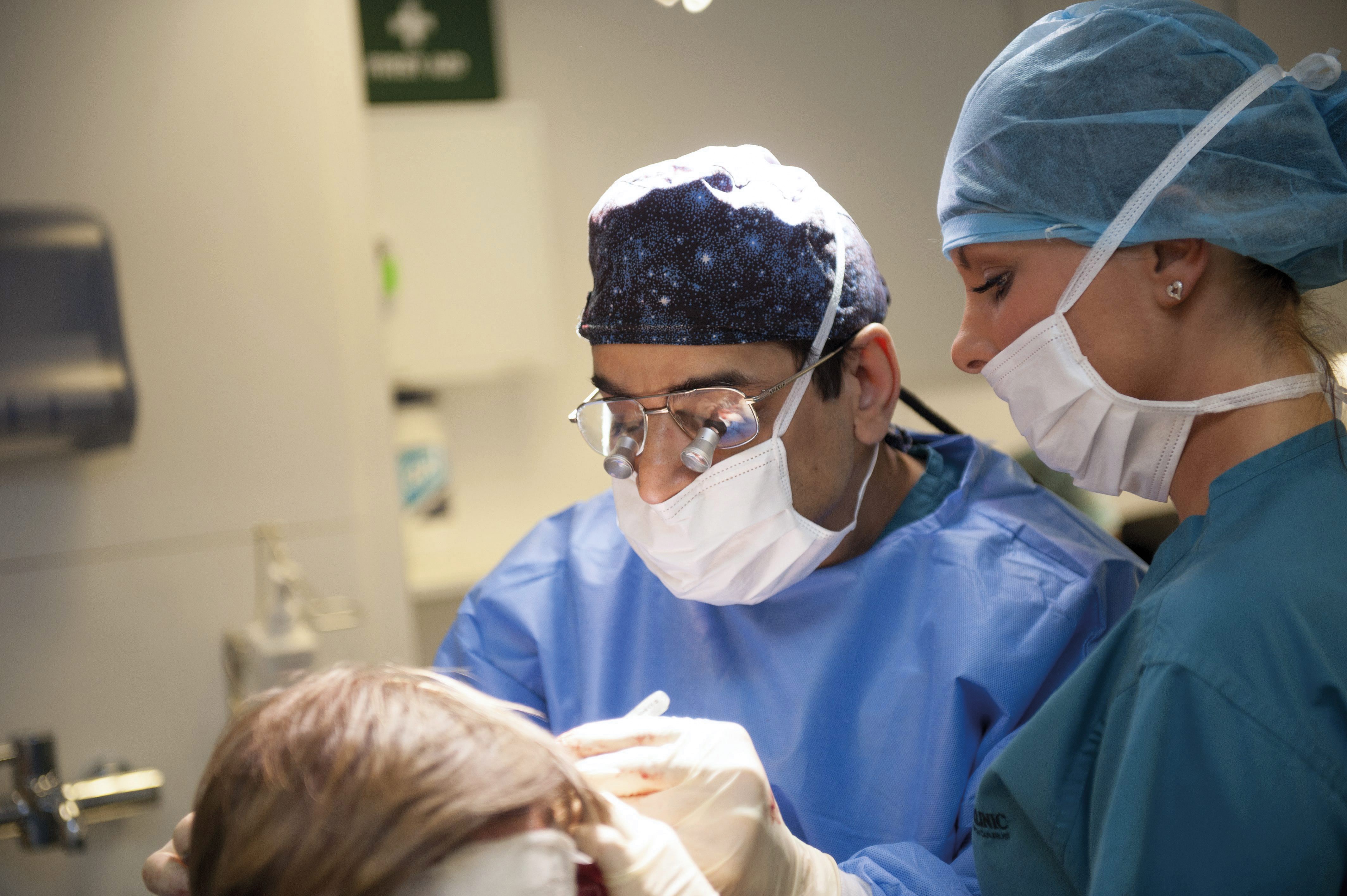
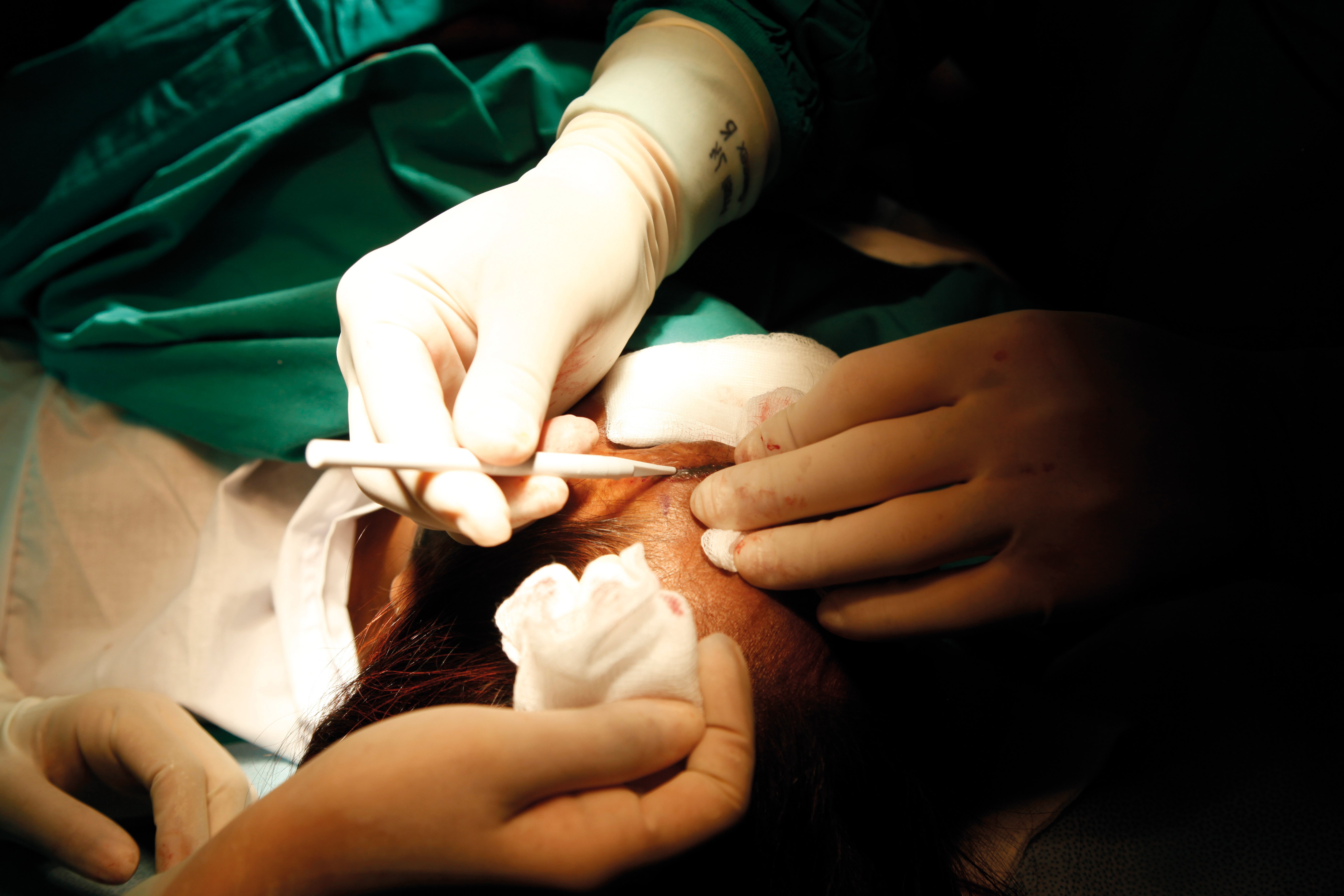
Close up of hair transplantation surgery.
FUE and its development over the last 10 years
A different hair transplantation method, follicular unit extraction (FUE), was first developed as a technique in the 1990s by Australian physician Dr Ray Wood and his sister Dr Angela Campbell [6]. They felt that cutting out a big patch of skin to harvest the donor hair was unnecessarily traumatic so developed a new technique where the follicular units were taken one-by-one, directly from the donor area, with fine needles. Early FUE techniques were fairly unsophisticated and there was noticeable scarring from punch grafts used to the remove the donor hair, which ranged in diameter from 1.5mm to 2mm [7]. However, more recently, these punches have become much smaller – 0.6-1mm in diameter – meaning the scarring is almost indiscernible to the naked eye. The equipment improved and manufacturers were able to develop more sophisticated punches that limited scarring.
Modern day FUE treatments involve removing individual follicular unit grafts, containing one to four hairs, under local anaesthetic using tiny punches. The grafts are replanted in the donor area using a fine needle, typically over the course of one day. Most surgeons are able to transplant up to 4000 grafts in a single day, though operations commonly involve between 1500 and 3000 grafts. FUE is much more time-consuming than FUT and therefore it is more expensive – costing approximately 50% more per procedure.
Over the last five years FUT has been superseded as the most popular method for treating baldness in men and women by FUE. The fact that several high profile celebrities have had hair transplants using the FUE method could explain the rise in patients seeking this treatment [8] [9]. This shift in the preferences of patients has been apparent in my clinic. Five years ago, 80% of my patients opted for FUT and 20% for FUE; now, it is the complete opposite, with 80% opting for FUE.
The main advantage over strip harvesting is that the scarring with FUE is minimal. Due to the smaller punch holes developed over the last five years, the scarring is barely visible two weeks after the operation. For the first few days, a patient has red pinpricks in the areas of the scalp used for harvesting but these fade. All incisions and cuts leave a scar, but an FUE scar is barely visible to the naked eye because each FUE scar shrinks to less than 0.5mm [10]. I have also noticed a surge in men wanting to wear their hair short around the back and sides of the scalp – and this style favours FUE over FUT.
Calum Best before first hair transplant.
Calum Best during and after his third hair transplant procedure.
Patient selection
Hair transplantation is the only permanent long-term solution for baldness. Anyone who has experienced permanent hair loss may be a candidate for hair restoration surgery including men and women with pattern baldness. We do not operate on patients under the age of 25 – largely because it difficult to establish how a patient’s baldness will progress before that age. People seek transplants for a number of reasons but the most popular is to restore or change the shape of their hairline. People with areas of scarring from injuries such as burns from an accident may also be suitable for a transplant.
Patients may require more than one hair transplant procedure to cover the bald areas of their scalp. If a patient has experienced substantial hair loss it may not be possible to cover the balding areas in a single procedure. While the transplanted hair is permanent, patients may continue to lose their natural hair after a procedure because hair loss is a continual process. All men have a permanent ‘horse shoe’ of hair around the back and sides of their scalp which remains even if they suffer from severe male pattern baldness. This horseshoe is from where the donor hair is harvested. It is possible to do several procedures on most patients without the donor area thinning noticeably.
FUE Case Study 1
This patient has had three FUE procedures at the Crown Clinic over the last four years. On each occasion he had around 1200 grafts (2200 individual hairs) moved from the back and side to the front of his scalp where his hair is still receding, particularly at the temples. This patient began losing his hair in his early 20s. He chose the FUE method to limit scarring to the back and sides of his scalp where he often wears his hear short. Hair loss is a continual process and he could have slowed down his natural hair loss by taking a clinically-proven drug such as Propecia [11]. This would not have helped him to grow any new hair, but it could have significantly halted the onset of his male pattern baldness. Around 3% of patients taking Propecia suffer sideeffects such as a reduced libido, and he declined to take this drug.
FUE Case Study 2
This 40-year-old had 2000 hair grafts transplanted from the back and side of his scalp into his balding crown through FUE in January 2016 [12]. It was his second hair transplant in the last five years after he started losing his hair when he was just 18. This patient had previously worn wigs and toupees worth £500 to cover his baldness. He needed a second hair transplant because he had continued to lose his natural hair. Hair loss is a continual process, though it does tend to slow down in late middle age (over the age of 50). He could have slowed down or stopped the loss of his natural hair by taking Propecia but, like the first case, he chose not to take it.
Chris Steed prior to hair transplant.
Chris Steed during his first procedure.
Chris Steed back of head after transplant.
Complications
As with any surgery, there can occasionally be complications such as an infection, which can usually be remedied with antibiotics. Also, there is a chance that the new follicles become ingrown hairs, leading to cysts, though this complication is rare [13]. These ingrown hairs need to be removed and the cysts burst. With all hair transplant procedures there is a transection rate – recording the number of grafts that fail to take hold in the donor area. Transection rates for FUT and FUE vary between clinics. A low transection rate is a good sign of quality because it reflects the expertise of the surgeon in placing the grafts. The gold standard for the FUE transection rate is 5%. The more skilled the surgeon, the lower the transection rate. It is very difficult to find average figures because clearly if a surgeon has a poor transection rate, they do not want this fact advertised [14].
Side-effects and postoperative care
The patient will need a week to recover from the transplant. It is recommended that they sleep slightly upright with several pillows for the first few days after a procedure to stop them damaging the new hair. The patient should wear a buttoned-up shirt for a week or so afterwards, because removing a t-shirt or jumper after a procedure can displace the transplanted hair.
In the first two weeks after a transplant, nearly all the transplanted hair falls out due to the trauma of being moved to a new location on the scalp. This is known as ‘shock loss’ and is only temporary [15]. Between eight and 12 weeks later, the new hair will begin to grow from the transplanted follicles. The new growth will progress over the next six to nine months but it can be a year before a hair transplant can be shown off to its full effect.
New techniques in hair transplantation over the last five years
Robotic hair restoration
Robotic hair restoration machines to assist with the extraction of follicles in FUE have been developed in the last seven years [16]. The effectiveness of these robotic transplants is yet to be confirmed. Early studies into the effectiveness of robotic surgery suggest that transection rates tend to be higher than manual procedures. Robotic transection rates were as high as between 6-15%, according to the history and research section of the Wikipedia entry for FUE [17]. More research is needed for a fuller picture. While the robot removes much of the highly repetitive work in extracting the grafts, there are significant disadvantages compared to more manual methods – particularly the size of the punches being larger, leading to more scarring. The machines are expensive, and this impacts on patient costs.
Scalp micropigmentation (SMP) or hair tattooing
SMP [18] is a relatively new non-invasive technique for disguising baldness developed in the last ten years. SMP involves having your scalp tattooed with tiny dots that resemble the appearance of stubble or a short ‘crew’ cut. There is no scarring and it can also be used to hide transplant scars or conceal small areas where hair is thinning to make it appear denser. It is a good option for men who suffer from alopecia universalis (complete hair loss) and have no natural donor hair for a hair transplant.
SMP does not penetrate the skin as deeply as normal tattooing and the colour can be matched to your previous hair colour and skin tone. The main drawback is that the tattoos fade and need to be replenished after approximately 18 months.
Platelet rich plasma (PRP)
PRP therapy [19] for hair loss is a treatment that involves extracting a patient’s own blood, processing it in a centrifuge to separate the enriched cells (PRP) and then injecting these cells back into the scalp [20]. PRP contains proteins that stimulate natural hair growth. The treatment can be combined with hair transplant surgery or clinically proven hair loss medication such as Propecia and Minoxidil. In a recent study published in Dermatologic Surgery [21], physicians in South Korea published data supporting the clinical application of PRP in hair restoration. The aim of the study was to investigate the effects of PRP on hair growth. The results were promising and indicated that PRP was effective.
A look into the future
A hair transplant is a skillful distribution of available hair. However, no new hair is produced. But what if surgeons could solve the problem of the limited number of donor hair follicles? Researchers are currently trialing new alternative treatments. New stem cell techniques involve retaining part of the donor hair follicle and supporting its regeneration – producing two follicles from one and doubling the extent of the donor hair. The main drawbacks so far have been related to the quality of the resulting hair grafts [22].
Hair cloning involves healthy follicle cells that are extracted from areas of the scalp where there is no baldness. These cells are multiplied (cloned) by various culturing methods and the newly produced cells are then injected back in the balding areas of the scalp where they would produce new hair. However, the method is still in the research phase and no hair transplant clinics are currently using it [23].
Conclusion
The future looks bright for hair transplantation. FUE will continue to dominate the category in years to come, though there will always be a place for FUT because FUE is not suitable for some patients. New stem cell techniques and hair cloning are still in their infancy and are unlikely to impact significantly on patients in the next five years. In the longer-term, though, they could both assist surgeons and provide new solutions for patients suffering from hair loss.
References
1. McAndrews PJ, History, American Hair Loss Association, 2016.
http://www.americanhairloss.org/
surgical_hair_restoration/history.asp
2. Shaprio J, Otberg N: Hair restoration surgery, Hair Loss and Restoration Second Edition. CRC Press: Florida, US; 2015:179.
3. Follicular Unit Transplantation. Wikipedia.
https://en.wikipedia.org/wiki/
Follicular_unit_transplantation
4. Hairdoc. Chapter 11: History of Surgical Hair Restoration
http://www.hairdoc.com/hair-loss
-answers/chapter-11-history
-of-surgical-hair-restoration/
5. International Society of Hair Restoration Surgery.
http://www.ishrs.org/
6. FUE Hair Transplant, Historical Development of Hair Transplant Surgery. 2016.
http://www.fue-hairtransplant.com/
haartransplantation/informationen/
geschichtliche-entwicklung.html
7. Hair Transplant Network.com
https://www.hairtransplantnetwork.com/
Hair-Loss-Treatments/hair-transplant-history.asp
8. Armstrong J. Hair expert reveals exactly what’s happened to Wayne Rooney’s hair. Mirror Online 2016.
9. Kirkova D. No man wants to be bald: Calum Best reveals ‘life changing’ results forking out £6,000 on his THIRD hair transplantation (and says he won’t rule out a forth. Mail Online 2015.
10. The Balding Blog. What Doctors Don’t Want You To Know About FUE.
https://baldingblog.com/2006/11/
17/what-doctors-dont-want-you-to-know-about-fue/
11. Hair Loss Talk. Propecia: Five Year FDA Clinical Trial Results.
https://www.hairlosstalk.com/
treatments/propecia/5-year-trial-results/
12. Fenwick A. Gogglebox star Chris Steed reveals the results of his £10,000 ‘Wayne Rooney’ hair transplant after going bald at 18 and wearing ‘embarrassing’ wigs to conceal it. Mail Online 2016.
13. The Balding Blog. Ingrown Hair/Pimples Months After Hair Transplant.
https://baldingblog.com/2011/
04/06/ingrown-hairs-pimples
-months-after-hair-transplant/
14. The Balding Blog. What Doctors Don’t Want You To Know About FUE. 2006.
https://baldingblog.com/2006/11/
17/what-doctors-dont-want-you-to-know-about-fue/
15. New York Hair Loss. Shedding After A Hair Transplant.
http://nyhairloss.com/shedding-hair-transplant/
16. The Balding Blog, Less than 3% transection rate from FUE, what about the Artas Robot and other doctors? 2014
https://baldingblog.com/2014/08/27/
less-than-3-transection-rate-from-fue
-what-about-the-artas-robot-and-other-doctors/
17. Follicular Unit Extraction. Wikipedia.
https://en.wikipedia.org/wiki/Follicular_unit_extraction
18. Scalp Pigmentation Explained, Grooming. Men’s Health 2011.
http://www.menshealth.co.uk/style/
grooming/scalp-pigmentation-baldness
19. Li ZJ, Choi HI, Choi DK, et al. Autologous platelet-rich plasma: a potential therapeutic too for promoting hair growth. Dermatologic Surgery 2012;38(7 Pt 1):1040-6.
20. Li ZJ, Choi H-I, Choi D-K, et al. Autologous Platelet-Rich Plasma: A Potential Therapeutic Tool for Promoting Hair Growth. 2012.
http://www.orangecountyhairrestoration.org/
webdocuments/Autologous-PRP-%20J-Derm-Articled.pdf
21. Fukuoka H, Suga H, Narita K, et al. The latest advance in hair regeneration therapy using proteins secreted by adipose-derived stem cells. The American Journal of Cosmetic Surgery 2012.
http://www.orangecountyhairrestoration.org/
webdocuments/ADSC-hair-restoration.pdf
22. Gasparik D. The Future of Hair Restoration. Worldwide Health 2016.
https://www.worldwidehealth.com/
health-article-The-Future-of-Hair-Restoration.html
23. Bernstein Medical. What is hair cloning? 2016.
http://www.bernsteinmedical.com/
hair-cloning/ (All web links correct as of May 2017)
Declaration of competing interests: None declared.
COMMENTS ARE WELCOME

